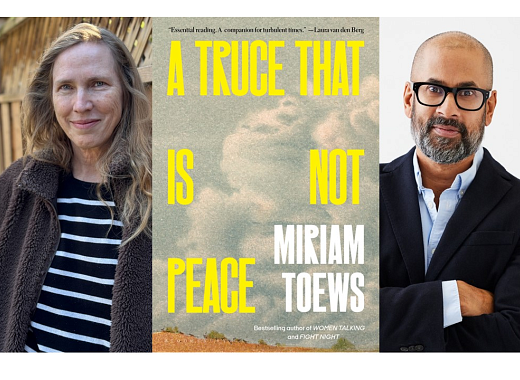Moderated by Jarrett Murphy, the executive editor and publisher of City Limits, our panelists included Brandon Gibson, founder and CEO of Light Rock Holdings LLC, a real estate company that focuses on acquiring residential properties through NYC, Michelle Neugebauer, Executive Director of the Cypress Hills Local Development Corporation (CHLDC), Winston Von Engel, Director of the Brooklyn Office of the Department of City Planning, and Patricia Worthy, a long-time resident and community activist for East Brooklyn Congregations (EBC).
 Jarrett Murphy, Editor-in-Chief at City Limits, introduces panelists.
Jarrett Murphy, Editor-in-Chief at City Limits, introduces panelists.East New York was founded in 1825 by the idealistic John Pitkin as a city to rival New York City, but it never grew beyond its primarily residential roots and, like all of the outer boroughs, remained a commuter neighborhood for Manhattan. Today, less than 5% of all New Yorkers have visited the area, but the neighborhood continues to garner more attention, particularly with Mayor de Blasio’s hopes to make this community a center of his affordable housing initiative, which aims to develop 200,000 housing units in NYC.
The discussion began with some historical context from Jarrett Murphy, who explained that East New York was once a working class community largely populated by Eastern and Central European immigrants. The neighborhood’s demographics began changing in the 1940s when the city took down the elevated train line, placing it underground, and many white families left for the suburbs. In the following post-war decades, East New York suffered from an era of bank redlining, a lack of city services, and the crack epidemic that devastated many NYC neighborhoods.
Mr. Gibson, a born and raised East New York resident, depicted the improvements seen over the past few decades resulting from strong community members “who took ownership of the neighborhood.” During this time, residents advocated for better schools, improved police presence, and more home ownership, among other things.
 Panelists listen in as Patricia Worthy, a long-time resident and community advocate, speaks about affordable housing.
Panelists listen in as Patricia Worthy, a long-time resident and community advocate, speaks about affordable housing.Gibson and Worthy are strong advocates for enabling East New Yorkers to own their own homes and build their own wealth to strengthen the community. They expressed skeptical opinions on whether Mayor de Blasio’s affordable housing plan for the neighborhood can do this for its residents. “Affordable for who?,” Worthy asked. “It’s not affordable for everybody – to me it’s not feasible. And I don’t hear much about senior housing.”
Neugbauer suggested that “there needs to be a robust package of tax incentives and housing preservation policies to maintain the low and moderate income home owners that exist in the community now. In 10 years what will the ethnic and racial make-up of the neighborhood be if we don’t put in place housing preservation policies?”
Mr. Von Engel said the de Blasio administration’s proposed plan will create 7,000 units of housing in East New York, increasing the population by about 21,000 residents.
The evening ended with audience questions about East New York facing the gentrification that its neighboring communities have seen. Neugebauer said she believes that “if East New York is going to survive the wave of gentrification coming from Bushwick, we are going to have to lock in thousands of deeply affordable apartments.” She outlined a plan that included preservation of affordable living in the area, and advocated for local, small businesses so that retail prices remain affordable for residents.
For more resources about development in East New York, browse NYC Department of Planning’s website, and for information about the community’s past, visit the Tapeshare website.
This event was part of a series with Jarrett Murphy looking at the history and future of Brooklyn neighborhoods. Next up: a conversation about post-9/11 surveillance in Bay Ridge on Tuesday, October 20th. Reserve your spot here.
This blog post reflects the opinions of the author and does not necessarily represent the views of Brooklyn Public Library.
Post a Comment
While BPL encourages an open forum, posts and comments are moderated by library staff. BPL reserves the right, within its sole discretion, not to post and to remove submissions or comments that are unlawful or violate this policy. While comments will not be edited by BPL personnel, a comment may be deleted if it violates our comment policy.
eNews Signup
Get the latest updates from BPL and be the first to know about new programs, author talks, exciting events and opportunities to support your local library.







